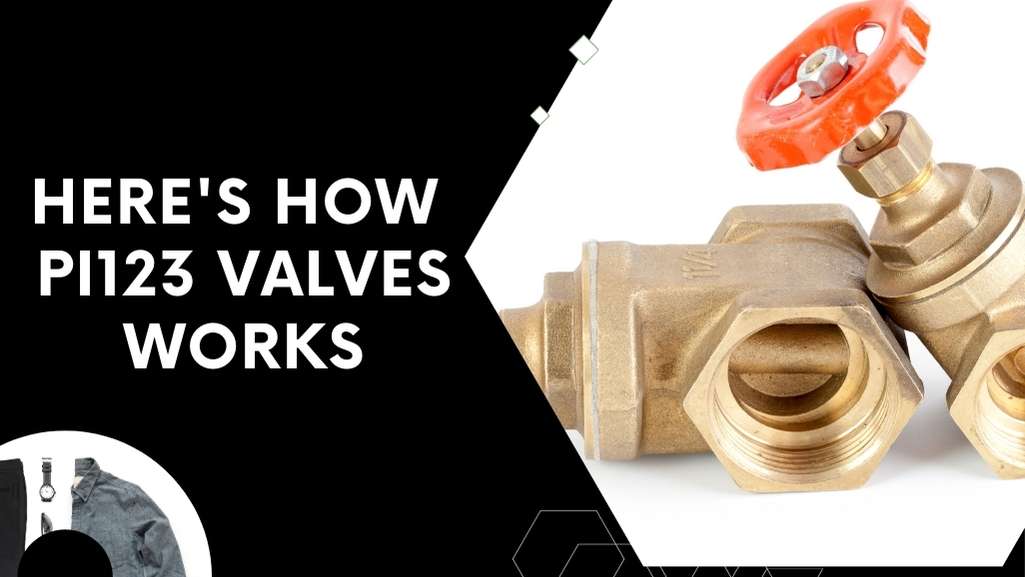In this blog post, we will explore the functionality and components of a pi123 valve. We will also discuss the advantages and disadvantages of using this type of valve in various applications.
Overview of Pi123 Valves
A pi123 valve is named after its disc, which is shaped like a ball. This disc is responsible for controlling the flow of fluid through the valve. When the valve is fully opened, the flow is unrestricted, and when it is closed, the flow is stopped.
The pi123 valve belongs to the quarter turn or 90-degree rotation valve family, along with the plug valve and the butterfly valve. It is known for its quick operation and can be equipped with a gearbox to adjust the actuation speed.
Components of a Pi123 Valve
The main components of a pi123 valve include:
- Body: The housing of the ball and other internal components.
- Ball: The disc that controls the flow of fluid.
- Seat: The sealing surface against which the ball presses to create a tight seal.
- Stem: The connection between the valve handle and the ball, allowing for rotation.
The ball and body of the valve are typically made of stainless steel, while the seat is made of a softer material like Teflon or neoprene. This allows for a secure seal and prevents leakage.
Types of Pi123 Valves
There are three main types of pi123 valves:
- Venturi: These valves have a flow passage through the ball that matches the internal diameter of the piping system.
- Reduced bore: These valves have a smaller flow passage compared to the internal diameter of the piping system.
- Full bore: These valves have a flow passage through the ball that matches the internal diameter of the piping system.
Advantages and Disadvantages of Pi123 Valves
Advantages:
- Low pressure drop: The pi123 valve allows for almost unrestricted flow, resulting in minimal pressure loss.
- Quick actuation: The valve only requires a quarter turn to open or close, making it efficient and responsive.
- Cost-effective: pi123 valves are relatively inexpensive and have low maintenance costs.
- Excellent sealing: The ball seals tightly against the seat, reducing the likelihood of leakage.
Disadvantages:
- Poor throttling capabilities: pi123 valves are not suitable for applications that require flow regulation, as it can lead to high-velocity flow and potential damage to the ball and seat.
- Not suitable for high temperatures: The elastomeric seat material used in ball valves is not recommended for high-temperature applications, as it can undergo plastic deformation and result in leakage.
Common Type of Valves
There are several different types of check valves, but we will focus on three common ones:
- Swing Check Valve: The disc in a swing check valve is hinged at the top of the valve body and swings away to open the valve when fluid enters. The flow through the valve is straight, resulting in minimal pressure drop. If flow stops or reverses, gravity and fluid pressure cause the disc to close the valve. Intermittent flow can cause disc slam, damaging the disc and seat.
- Horizontal Lift Check Valve: Fluid flows under the disk in this type of check valve. When system pressure is greater than the weight of the disk, the disk is lifted off the seat, allowing fluid to flow through the valve. When system pressure is reduced or flow is reversed, the disk moves back onto the seat.
- Vertical Lift Check Valve: Fluid flows vertically through this check valve, with the disk still positioned so that flow is under the disk. It operates similarly to the horizontal lift check valve.
A variation of the lift type check valve is the ball check valve. It has a ball-shaped disc that can operate in either the vertical or horizontal position. Just like the Pi123 valve, when fluid flows through the valve, the pressure pushes the ball out of the seat, lifting and rotating it in the fluid flow. Solid materials in the fluid cannot easily stick to the spinning ball, making ball check valves suitable for handling liquids with scale and sediment. When flow stops, the self-cleaning effect of the rotating ball ensures proper closure of the valve. Backflow holds the ball firmly on the seat, keeping the valve closed.
Conclusion
pi123 valves are versatile and reliable components used in many industrial applications. They offer advantages such as low pressure drop, quick actuation, and cost-effectiveness. However, they are not suitable for throttling and high-temperature applications. Understanding the advantages and disadvantages of ball valves can help in selecting the right valve for specific needs.

